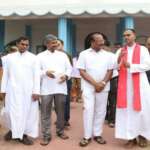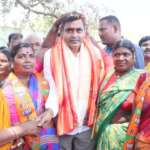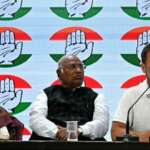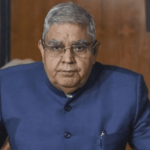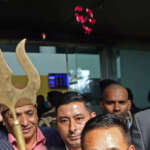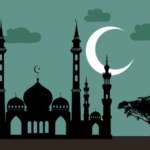A Closer Look at India
India Flag

India Formation Date
India's country formation date is August 15, 1947.
India Capital Name
The capital of India is New Delhi.
India Neighbours
Exploring India
India: A Land of Diversity, History, and Culture
India, located in South Asia, is a country with a rich and diverse culture, vibrant history, and a rapidly growing economy. It is the seventh-largest country in the world by land area and the second-most populous country with over 1.3 billion people. The name India is derived from the Indus River, which was known as Sindhu in Sanskrit. The country has been known by various names throughout its history, including Bharat, Hindustan, and Aryavarta. Let's dive into the fascinating world of India and explore its geography, history, culture, and more.Key Takeaways:
- India is a South Asian country with a diverse culture and rich history.
- The name India is derived from the Indus River.
- The country is the seventh-largest by land area and the second-most populous in the world.
- India has a rapidly growing economy and is one of the fastest-growing major economies.
Geography:
India is a vast country with diverse physical features. It is surrounded by the Indian Ocean on three sides and shares land borders with Pakistan, China, Nepal, Bhutan, Bangladesh, and Myanmar. The northern part of India is dominated by the Himalayas, the highest mountain range in the world. The southern part of India is mostly made up of plateaus and plains. The country also has numerous rivers, including the Ganges, Brahmaputra, and Yamuna. India is blessed with abundant natural resources such as coal, iron ore, natural gas, and oil. It is also home to a variety of wildlife, including tigers, elephants, and peacocks. The climate in India varies from tropical in the south to temperate in the north. The country experiences three main seasons - summer, monsoon, and winter.Origin and History:
India has a long and fascinating history that dates back to ancient civilizations. The Indus Valley Civilization, one of the oldest civilizations in the world, flourished in the northwestern part of India around 3300 BCE. Over the centuries, India has been ruled by various dynasties, including the Mauryas, Guptas, Mughals, and British. India gained independence from British rule in 1947 and became a republic in 1950.Government and Politics:
India is a federal parliamentary democratic republic with a multi-party system. The President is the head of state, while the Prime Minister is the head of government. The country is divided into 28 states and 8 union territories, each with its own elected government. India has diplomatic relations with most countries in the world and plays an important role in international affairs.Commerce and Economy:
India's economy is one of the fastest-growing major economies in the world. The country has a diverse economic sector, with agriculture, services, and industry contributing significantly to its GDP. India is also a major player in global trade, with its main export partners being the United States, China, and United Arab Emirates. The Indian rupee is the official currency of India.Demographics:
India has a diverse population with people from different ethnicities and religions living together. The majority of the population follows Hinduism, while Islam, Christianity, Sikhism, Buddhism, and Jainism are also practiced. The country has a young population with a median age of 28 years. Hindi is the most widely spoken language in India, followed by Bengali, Telugu, Marathi, Tamil, and others.Culture:
India's culture is a blend of various influences, including ancient civilizations, religions, and colonialism. The country is known for its vibrant art, music, and dance forms, such as classical Indian dance and Bollywood music. India also celebrates numerous festivals throughout the year, including Diwali, Holi, and Durga Puja. The people of India are warm, hospitable, and value their traditions and customs.Languages and Religion:
India is a land of diverse languages and religions. While Hindi is the most widely spoken language, there are over 1,500 other languages and dialects spoken in different parts of the country. Hinduism is the dominant religion in India, followed by Islam, Christianity, Sikhism, Buddhism, and Jainism. Religion plays a significant role in Indian society and has a strong influence on people's daily lives.Education and Healthcare Systems:
India has made significant progress in its education and healthcare systems over the years. The country has a vast network of schools and universities that provide education to millions of students. The literacy rate in India has also improved significantly in recent years. The healthcare system in India is a mix of public and private institutions, with government initiatives focused on improving access to healthcare for all.Sports and Recreation:
Sports play an essential role in Indian culture, with cricket being the most popular sport in the country. India has produced some of the world's best cricketers, including Sachin Tendulkar and Virat Kohli. Other popular sports in India include football, hockey, badminton, and kabaddi. The country has also hosted major sporting events like the Commonwealth Games and the Cricket World Cup.Tourism:
India is a popular tourist destination with a rich cultural heritage and diverse landscapes. The country has numerous tourist attractions, including the Taj Mahal, the Golden Temple, and the beaches of Goa. The bustling cities, serene backwaters, and majestic mountains offer something for every type of traveler. India also has a well-developed tourism infrastructure, with various transportation options and accommodation choices.Travel Information for Foreign Visitors:
If you are planning to visit India, here are some essential things to keep in mind:- Visa Requirements: Most foreign nationals require a visa to enter India. You can apply for an e-Visa or a regular visa through the Indian embassy in your country.
- Health and Safety: It is recommended to get vaccinated before traveling to India. It is also advisable to take precautions against mosquito-borne diseases and drink only bottled water.
- Local Customs and Etiquette: Indians are warm and hospitable people, but it is essential to respect their customs and traditions. Avoid wearing revealing clothes in public places, and always ask for permission before taking someone's photograph.
- Currency and Payment Methods: The official currency of India is the Indian rupee (INR). Credit cards are widely accepted in major cities, but it is always advisable to carry cash for smaller purchases.
Quotes:
- "India is the cradle of the human race, the birthplace of human speech, the mother of history, the grandmother of legend, and the great-grandmother of tradition." - Mark Twain
- "In India, you can see the past coexisting with the present." - Amish Tripathi
- "India is not just a geography or history. It is not only a nation, a country, a mere piece of land. It is something more: it is a metaphor, poetry, something invisible but very tangible." - V. S. Naipaul
Conclusion:
India is a country with a fascinating blend of culture, history, and diversity. It has come a long way since gaining independence and has made significant progress in various fields. With its booming economy and rich cultural heritage, India is poised to become a global superpower in the future. So, pack your bags and get ready to explore this incredible country that will leave you mesmerized with its beauty and charm.India Highest Point Name
The highest point in India is located at Kanchenjunga in the Indian Himalayas, and stands at 8,586 metres (28,169 ft) above sea level. It is situated at the border between India and Nepal, and is part of the Great Himalayan Range.
India Capital Longitude
New Delhi, India is the capital of the country and its longitude is 77.2167
India Capital Latitude
India's capital is New Delhi. Its latitude is 28.6139° N and its longitude is 77.2090° E.
India Official Languages
The official language of India is Hindi, although there are 21 other recognized languages: Bengali, Telugu, Marathi, Tamil, Urdu, Gujarati, Kannada, Malayalam, Oriya, Punjabi, Assamese, Kashmiri, Sindhi, Sanskrit, Manipuri, Nepali, Konkani, etc.
India Ethnic Groups
India is a country with a rich diversity of ethnic groups. The 2001 census of India recognized 4,635 distinct ethnic groups; however, some sources estimate there are over 5,000 distinct ethnicities in India. The largest ethnic groups are the Indo-Aryan peoples, Dravidian peoples, Munda, and Tibeto-Burman peoples. The Indo-Aryans are the majority group, comprising 72.3% of population and are largely found in Northern India and the western Himalayas. The Dravidian peoples,originally from southern India, comprise 25.2% of the population. The Munda, who are native to central India, account for a population of 0.7%. Lastly, the Tibeto-Burman peoples,originally from East India, account for 0.9% of the population. Other ethnic groups include the Mongols, who arrived in India from Central Asia and comprise 0.4%; the Sikhs, who predominantly originate from Northern India and compromise 1.9%; the Gurkkhas, 0.2%; and the Meenas, 0.2%. There are also several small minor ethnic and tribal groups, such as the Santhals, the Gonds, and the Bhils, among others, which add to the cultural richness of India.
India Religions
India is a religiously diverse country with Hinduism, Islam, Christianity, Sikhism, Buddhism, Jainism, Zoroastrianism and the Baháʼí Faith. Hinduism, the major religion of India, is practiced by nearly 80% of the population. Islam is the second-largest practiced faith, with about 14% of the population adhering to it. Christianity, Sikhism, Buddhism and Jainism make up another 4%-5% of the population. Zoroastrianism and the Baháʼí Faith, along with several tribal religions, are practiced by a very small percentage of this population. India is a secular country, respecting the beliefs of all its citizens, while Hinduism is its major religion.
India Total Area
The total area of India is 3,287,263 square kilometers (1,269,219 square miles).
India Land Area
India covers an area of 3,287,263 square kilometers.
India Water Area
India has an area of 314,070,000 hectares of water bodies, which equates to 2.7 percent of the total land area. India has numerous rivers, reservoirs, lakes, wetlands, and marshes, as well as numerous other freshwater sources and coastal areas. Some of the most notable water bodies in India include the Ganges, Yamuna, Indus, Krishna, Narmada, Godavari, Tapi, Mahanadi, and Kaveri rivers; the Chilka, Widoo, Keoladeo, Pulicat, Tso Kar, and Sur Sarovar wetlands; the Sambhar, Kathajar, Pong, Dhoondho, Bhimtal, Nagin, Gobindsagar, Wular, Chilka, Koleru, Gundalakamma, and Pushkar lakes; and the Chilka and Sambhar lagoons.
India Total Population
As of 2021, India's estimated population is 1.37 billion people.
India Currency Name
The official currency of India is the Indian Rupee (INR).
India Currency Code
The country currency code for India is INR (Indian Rupee).
India Currency Symbol
The country currency symbol of India is ₹ (Rupee).
India Time Zones
- Standard Time: UTC+05:30
- Daylight Saving Time: UTC+06:30
India is officially in two standard time zones - Indian Standard Time (IST) and India Daylight Time (IDT). IST is UTC+5:30 and IDT is UTC+6:30. India begins Daylight Saving Time (DST) at 2:00 am on the first Sunday of April every year and reverts to standard time at 2:00 am on the last Sunday of October. This effectively shifts the time forward by one hour for the extended period of daylight savings. As of 2021, the period of daylight savings in India runs from April 4 to October 31.
India Calling Code
The country calling code for India is +91
India Internet TLD
www.aveholidays.in
How to Say "India" In Different Languages?
- Spanish
- India (es-AR)
- English
- India (en-AU)
- Bengali
- ভারত (bn-BD)
- Portuguese
- Índia (pt-BR)
- Chinese
- 印度 (zh-CN)
- French
- Inde (fr-FR)
- German
- Indien (de-DE)
- Greek
- Ινδία (el-GR)
- Hindi
- भारत (hi-IN)
- Indonesian
- India (id-ID)
- Italian
- India (it-IT)
- Japanese
- インド (ja-JP)
- Burmese
- အိန္ဒိယ (my-Myanmar)
- Norwegian
- India (no-NO)
- Filipino
- India (tl-PH)
- Sinhala
- ඉන්දීයාව (si-LK)
- Arabic
- الهند (ar-SY)
- Thai
- อินเดีย (th-TH)
- Korean
- 인도 (ko-US)
- Vietnamese
- Ấn Độ (vi-VN)
India Popular Holidays
- Guru Gobind Singh Jayanti
- 2 January
- Saraswati Puja
- 6 January
- Vasant Panchami
- 12 January
- Makar Sankranti
- 14 January
- Pongal
- 15 January (18 January)
- Swami Dayananda Saraswati Jayanti
- 25 January
- Maha Shivratri
- 11 February
- Chhatrapati Shivaji Maharaj Jayanti
- 19 February
- Mahashivaratri
- 21 February
- Maha Shivaratri
- 4 March
- Sant Guru Kabir Jayanti
- 17 March
- Rama Navami
- 21 March
- Navroze
- 21 March
- Holi
- 29 March (30 March)
- Ram Navami
- 2 April
- Gudi Padwa
- 6 April
- Good Friday
- 10 April
- Maharshi Dayanand Saraswati Jayanti
- 10 April
- Mahavir Janma Kalyanak
- 11 April
- Easter Sunday
- 12 April
- Bohag Bihu
- 13 April
- Tomb of Dr. Ambedkar
- 14 April
- Baisakhi
- 14 April
- Vishu
- 14 April
- Mahavir Jayanti
- 17 April
- Shab-e-Barat
- 23 April
- Mahatame Jyotiba Phule Jayanti
- 28 April
- Labor Day
- 1 May
- Buddha Purnima
- 7 May
- Guru Rabindranath Jayanti
- 9 May
- Hanuman Jayanti
- 11 May
- Eid-ul-Fitr
- 24 May
- Akshaya Tritiya
- 7 June
- Mahatama Jyotiba Jayanti
- 19 June
- Ratha Yatra
- 4 July
- Guru Purnima
- 5 July
- Eid-ul-Adha
- 31 July (1 August)
- Narali Purnima
- 31 July
- Raksha Bandhan
- 3 August
- Janmashtami
- 11 August (12 August)
- Onam
- 11 August (14 August)
- Krishna Janmashtami
- 14 August
- Independence Day
- 15 August
- Ganesh Chaturthi
- 22 August
- Durga Ashtami
- 29 August
- Muharram
- 30 August
- Ganesh Chaturthi
- 2 September
- Mahatma Gandhi Jayanti
- 2 October
- Karva Chauth
- 4 October
- Vijaya Dashami
- 8 October (9 October)
- Karaka Chaturthi
- 17 October
- Mahalaya Amavasya
- 17 October
- Navratri
- 17 October (25 October)
- Maharshi Valmiki Jayanti
- 20 October
- Maha Saptami
- 26 October
- Ayudha Puja
- 26 October
- Bhai Dooj
- 29 October
- Gurupurab
- 30 October
- Deepavali/ Diwali
- 14 November (15 November)
- Mata Pita Ka Jayanti
- 17 November
- Chhath Puja
- 20 November (23 November)
- Guru Nanak Jayanti
- 30 November
- Vaikuntha Ekadashi
- 21 December
- Christmas Eve
- 24 December
- Christmas Day
- 25 December


